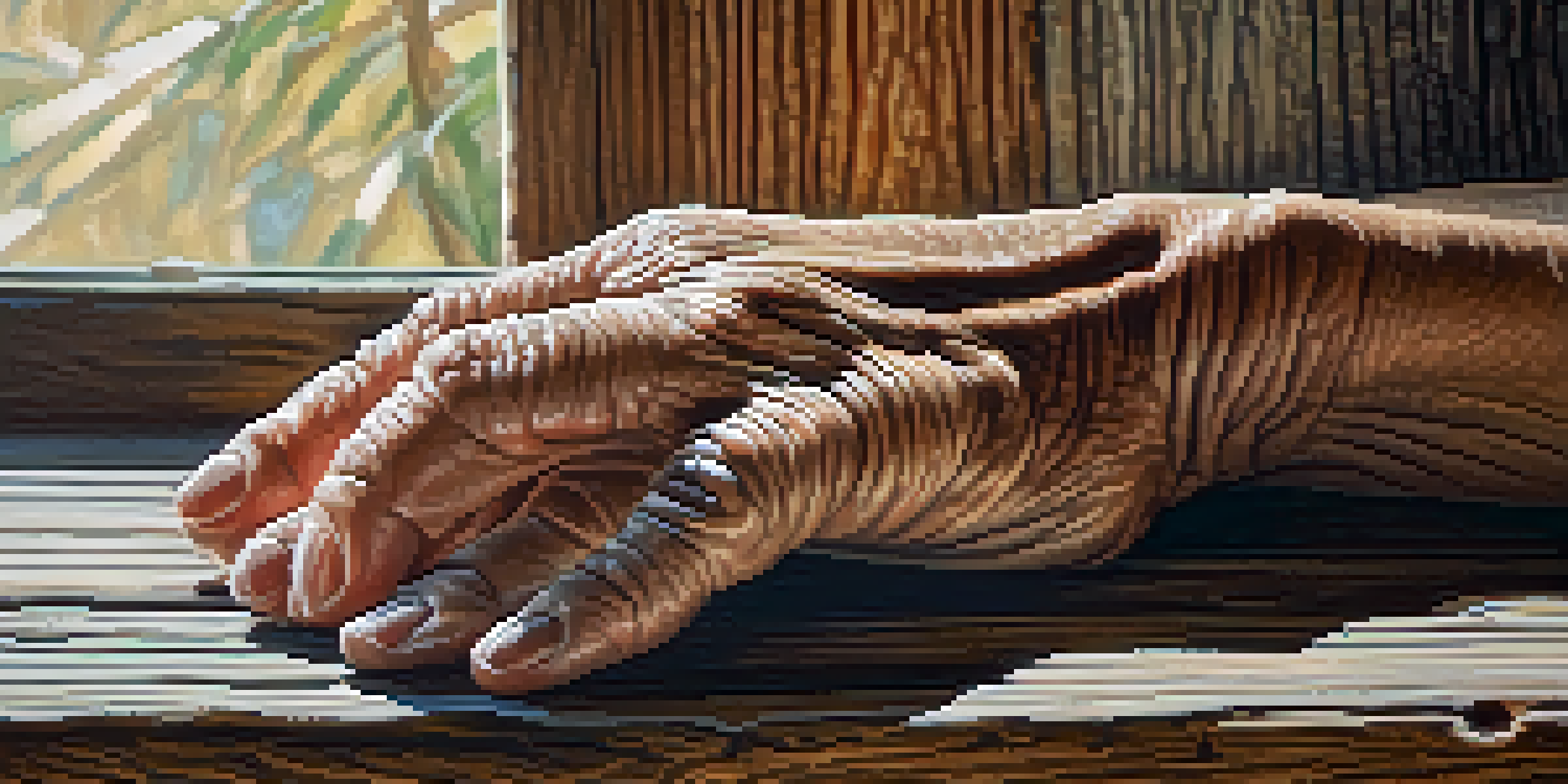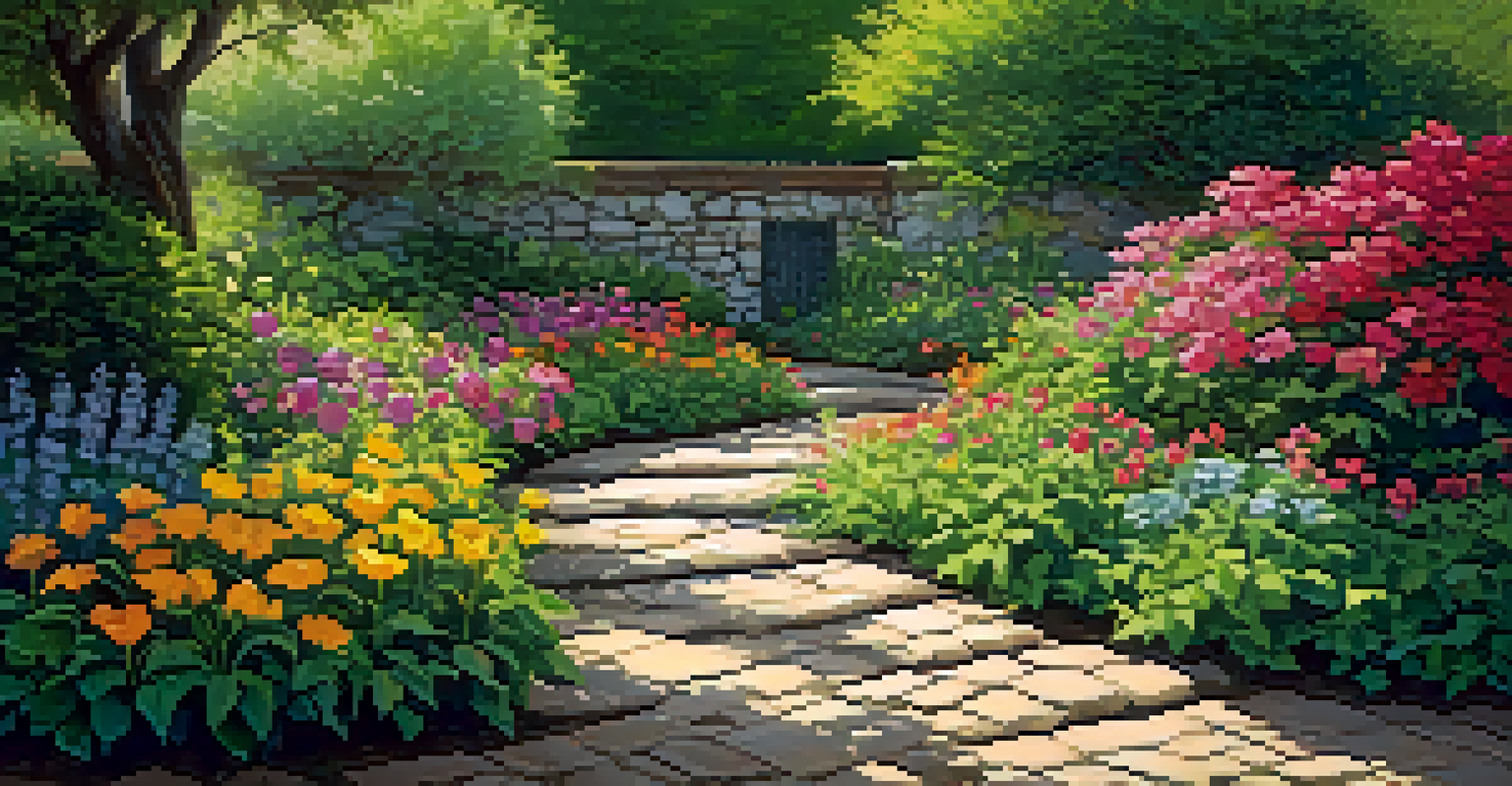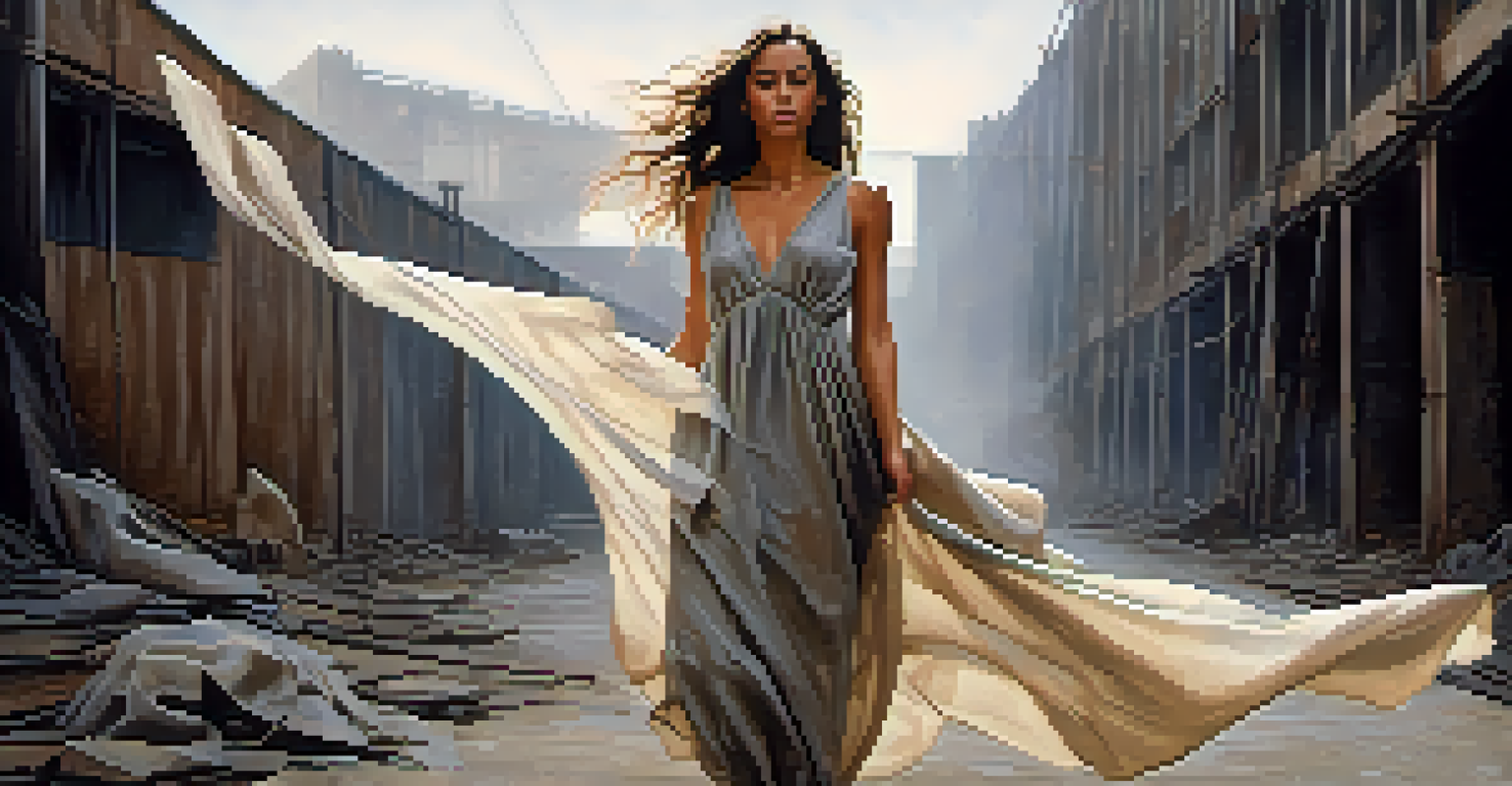The Role of Textures in Cinematography: Conveying Emotion

Understanding Textures: What Are They in Cinematography?
In cinematography, 'textures' refer to the visual and tactile qualities of surfaces and materials captured on film. They can range from the roughness of a brick wall to the softness of fabric, each contributing to the overall aesthetic of a scene. These textures can enhance a viewer's connection to the story by creating a sensory experience that feels real and relatable.
Textures are the silent storytellers of film, shaping emotions and evoking responses without a single word being spoken.
For instance, a close-up shot of a weathered hand can convey years of struggle and resilience, while the smooth surface of a polished table might evoke feelings of wealth or comfort. By manipulating textures, filmmakers can set the emotional tone and influence how audiences perceive characters and settings. This technique allows for storytelling that goes beyond dialogue and action.
Ultimately, understanding how textures work in cinematography is crucial for creating impactful visual narratives. They serve as a bridge between the audience and the story, creating a deeper emotional resonance that can elevate a film from good to unforgettable.
The Emotional Weight of Different Textures
Different textures convey distinct emotions, influencing how viewers feel about a scene. For instance, rough, gritty textures often evoke feelings of discomfort or struggle, while soft, smooth textures can create a sense of peace or nostalgia. This emotional weight is an essential tool for filmmakers, helping them to guide audience reactions without saying a word.

Take, for instance, a scene set in a dilapidated, crumbling building. The coarse surfaces and peeling paint can evoke a sense of decay and abandonment, resonating with themes of loss or nostalgia. Conversely, a scene shot in a lush, vibrant garden can evoke warmth and happiness, inviting audiences to feel uplifted and hopeful.
Textures Enhance Emotional Impact
Different textures in cinematography evoke specific emotions, influencing how audiences connect with characters and scenes.
By thoughtfully selecting and utilizing textures, filmmakers can manipulate emotions, creating a powerful cinematic experience. Recognizing this emotional weight empowers both filmmakers and viewers to appreciate the nuances of storytelling through visual elements.
Color and Texture: A Dynamic Duo in Storytelling
Color and texture often work hand-in-hand to create a rich visual narrative. While color sets the mood, texture adds depth and context, allowing viewers to engage with the emotional core of a scene. For example, a vibrant red wall with a rough texture might symbolize passion or anger, immersing the audience in the emotional landscape of the story.
In film, colors and textures work together to create a visual symphony that resonates with the audience’s emotions.
When these two elements are combined effectively, they can enhance character development and thematic depth. A character dressed in a flowing, soft fabric might evoke vulnerability, while a contrasting hard, jagged environment can highlight their struggles. This interplay provides layers to the storytelling, making it more compelling and relatable.
By understanding how color and texture collaborate, filmmakers can create visual poetry that resonates deeply with audiences. This synergy not only enriches the viewing experience but also reinforces the emotional arcs of characters and the overarching narrative.
Textures in Lighting: Enhancing Emotional Impact
Lighting plays a pivotal role in how textures are perceived on screen. Different lighting techniques can highlight or diminish certain textures, therefore altering their emotional impact. For example, soft, diffused lighting can create gentle shadows that accentuate the smoothness of a surface, evoking a sense of calm and serenity.
Conversely, harsh lighting can create stark contrasts, bringing out the ruggedness of a texture, which may evoke feelings of tension or unease. This manipulation of light and shadow can transform an ordinary scene into an emotionally charged experience, guiding audience reactions in subtle yet powerful ways.
Color and Texture Work Together
The combination of color and texture enriches visual storytelling by adding depth and emotional resonance to scenes.
Understanding the interplay between textures and lighting allows filmmakers to craft scenes that are not only visually stunning but also rich in emotional depth. This combination can elevate storytelling, making every shot resonate with the audience.
The Use of Textures in Character Design
Textures are not limited to environments; they also play a crucial role in character design. The choice of clothing, accessories, and even skin textures can provide insights into a character’s personality and emotional state. For example, a character wearing worn-out clothes may hint at a life of hardship, instantly creating empathy with the audience.
Moreover, the tactile qualities of a character's design can enhance their relatability. Characters adorned in soft fabrics may evoke warmth and approachability, while those in stiff, rough materials might appear more rigid or unyielding. This visual language helps audiences understand and connect with characters on a deeper level.
In this way, textures become a silent yet powerful storyteller, shaping the audience's perception and emotional response. Filmmakers can use these elements to craft complex characters that resonate beyond their actions and words.
Cultural Significance of Textures in Cinematography
Textures can carry cultural significance, adding layers of meaning to a film. Different cultures interpret textures in unique ways, which filmmakers can leverage to enhance storytelling. For example, a richly embroidered textile may be viewed as a symbol of wealth or status in one culture, while in another, it may represent tradition and heritage.
By incorporating culturally significant textures, filmmakers can create a more authentic and immersive experience for audiences. This attention to detail allows for a deeper understanding of the characters and their backgrounds, fostering empathy and connection.
Cultural Context Shapes Texture Meaning
Textures carry cultural significance that can enhance storytelling and foster empathy by reflecting diverse backgrounds.
The cultural significance of textures not only enriches the narrative but also invites diverse audiences to engage with the film on a more personal level. Recognizing these nuances can lead to a more profound appreciation of the art of cinematography.
The Future of Textures in Cinematography
As technology advances, the role of textures in cinematography continues to evolve. With the rise of virtual reality and augmented reality, filmmakers now have new tools to create immersive environments that play with textures in innovative ways. This evolution presents exciting possibilities for engaging audiences and conveying emotion.
For instance, imagine a virtual reality experience where viewers can feel the textures of a scene, enhancing their emotional connection to the story. This interactive element can deepen the impact of textures, making them an even more integral part of the storytelling process.

As we look to the future, it's clear that textures will remain a fundamental aspect of cinematography. Filmmakers will continue to explore and experiment with this element, pushing the boundaries of how textures can evoke emotion and enhance storytelling.